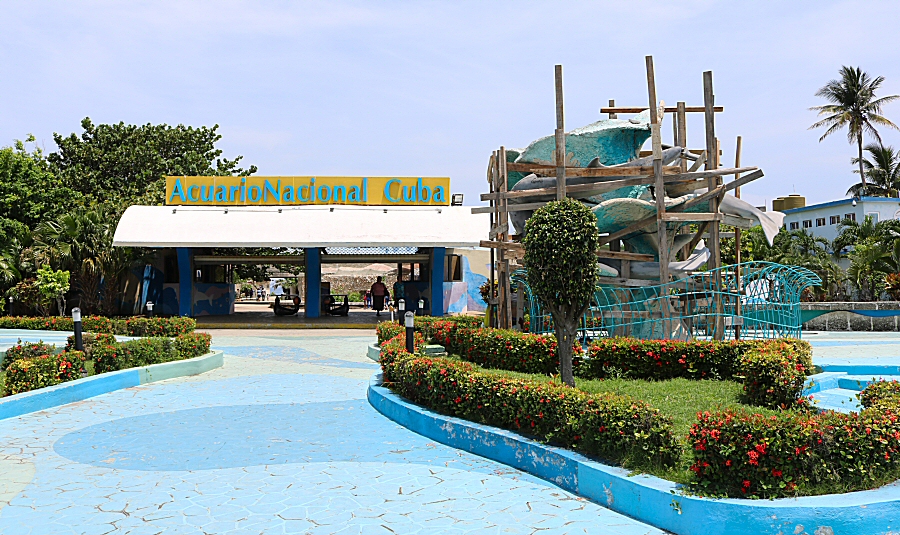

The National Aquarium of Cuba is located on the 3rd Avenue #6001 at the corner of the 60th street in Miramar.
The National Aquarium of
Cuba is a scientific center that has the main objective
to raise the culture and the education about the care,
conservation and rational use of the sea, coasts and the
marine resources.
The
Dolphinarium has a capacity of about 1.200 spectators. The
show, performed by eight well trained dolphines , is rather
spectacular. Each trainer is certified by
World Association of Sea Mammals.
The facility
is used also for the show of the sea lions. It is better to
time your visit to coincide with one of the dolphin or sea
lion shows that takes about 20 minutes.
If you would
prefer to take the lunch in the El Gran Azul Restaurant of
the aquarium, you can watch the underwater dolphin show
through a huge window set below the surface of the water.
The acrylic window is 7 meters long,
14 meters wide and 22 cm thick. The
show, performed by three dolphins with their trainers (usually
one boy and two girls), starts around 13:30.
The Mangrove Trail
covers an area of about 380 m2. It is a reproduction of a
mangrove forest, including the white mangrove (Laguncularia
racemosa) and black mangrove (Avicennia germinans) species.
You can follow the ecological path that goes through the
mangroves of 4 meters high.
In the rest of the
aquarium, the main typical marine elements of the Cuban
archipelago like the fishes, corals and marine
intervertebrates are exhibited in six tanks. However, the
low-key tanks are distant from arousing any excitement and
curiosity in the visitor. In this section, you can watch all
the marine life from different species of coral to turtle
grass, as well as from stoplight parrotfish to coney.
In the following section,
fish and marine invertebrates of small sizes are exhibited
in their natural environment in 24 fish tanks, such as
bluehead wrasse, gold head sleeper, saddled blenny, red
blenny, sharpnose puffer, lantern bass, among others.

